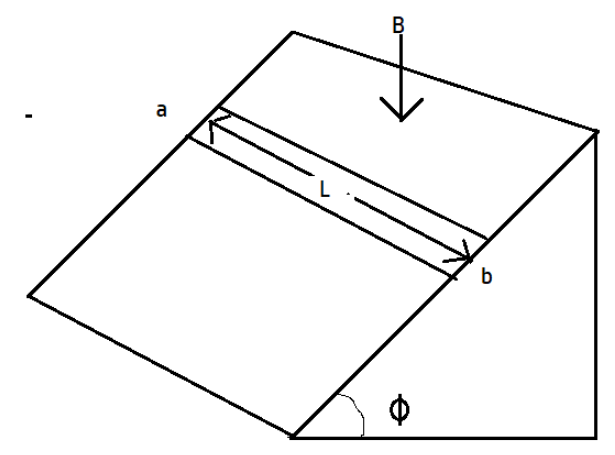
At what rate is electrical energy converted into thermal energy in the resistance of the bar after the terminal velocity has been reached?

(A)
(B)
(C)
(D)

Answer
505.5k+ views
Hint:Here metal rod of length l, is in motion in the area where there is a magnetic field present. We know from Maxwell equations that a changing magnetic field can induce current whose direction is given by Lenz law. Also, if the magnetic flux remains constant then there will be no induced emf.
Complete step by step answer:
From the concept of motional emf, the emf induced in a conductor which is moving in the region where the magnetic field is present. So, let us find the magnetic flux,
The area which the conductor covers can be written as the product of velocity and length, so, the equation becomes
But we are interested in finding out the rate at which the electrical energy converted into thermal energy in the resistance of the bar after the terminal velocity has been reached.
So, we need to find the rate of generation of thermal energy.
Using the formula,
So, the correct option is (B).
Note: If there was no change in the magnetic flux then there would have been no emf induced in the conductor. Since flux is the dot product of magnetic field and area vector, to change the flux there can be three conditions:
- Change in a magnetic field.
-Change in the area of the conductor.
-Change in the angle between the magnetic field and the area vector.
Complete step by step answer:
From the concept of motional emf, the emf induced in a conductor which is moving in the region where the magnetic field is present. So, let us find the magnetic flux,
The area which the conductor covers can be written as the product of velocity and length, so, the equation becomes
But we are interested in finding out the rate at which the electrical energy converted into thermal energy in the resistance of the bar after the terminal velocity has been reached.
So, we need to find the rate of generation of thermal energy.
Using the formula,
So, the correct option is (B).
Note: If there was no change in the magnetic flux then there would have been no emf induced in the conductor. Since flux is the dot product of magnetic field and area vector, to change the flux there can be three conditions:
- Change in a magnetic field.
-Change in the area of the conductor.
-Change in the angle between the magnetic field and the area vector.
Recently Updated Pages
Master Class 12 Business Studies: Engaging Questions & Answers for Success

Master Class 12 English: Engaging Questions & Answers for Success

Master Class 12 Economics: Engaging Questions & Answers for Success

Master Class 12 Social Science: Engaging Questions & Answers for Success

Master Class 12 Maths: Engaging Questions & Answers for Success

Master Class 12 Chemistry: Engaging Questions & Answers for Success

Trending doubts
Which are the Top 10 Largest Countries of the World?

Why is insulin not administered orally to a diabetic class 12 biology CBSE

a Tabulate the differences in the characteristics of class 12 chemistry CBSE

Why is the cell called the structural and functional class 12 biology CBSE

The total number of isomers considering both the structural class 12 chemistry CBSE

Differentiate between homogeneous and heterogeneous class 12 chemistry CBSE




